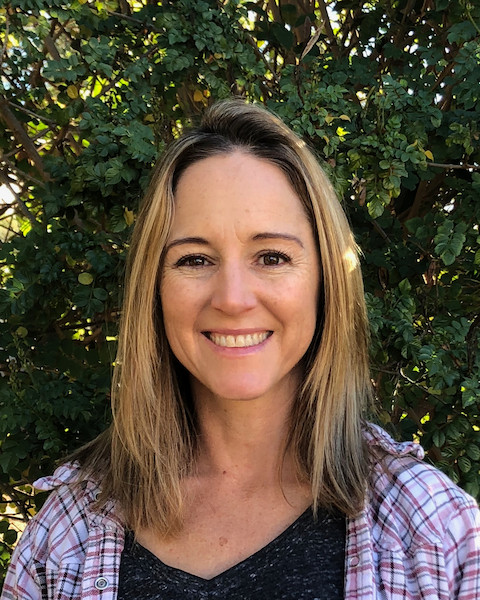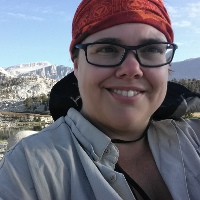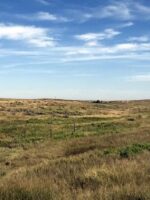The Brachypodium Phase II project continued treatment of the invasive grass, Brachypodium distachyon, in San Diego County where it threatens the persistence of covered species and sensitive habitats and increases wildfire risk to these resources.
CBI continued treatment of the invasive grass, Brachypodium distachyon, in San Diego County where it threatens the persistence of covered species and sensitive habitats and increases wildfire risk to these resources. We continued herbicide treatments for two years in seeded and unseeded areas on the Crestridge Ecological Reserve and South Crest Preserve, for a total of five years of treatment. We coordinated experimental design and monitoring methods with the San Diego Management and Monitoring Program and City of San Diego; study results will contribute to a regional analysis of Brachypodium control across multiple sites, habitats, and microclimates with the objective of scaling up control and restoration to the landscape-level.
Phase II objectives included (1) monitoring treatment areas, (2) assessing monitoring methods, (3) reducing nonnative species cover through herbicide application, and (4) refining Best Management Practices (BMPs) for Brachypodium control. We monitored treatment areas (native species richness, cover) quantitatively in 2016 and semi-quantitatively in 2016 and 2017, and continued herbicide treatment of Brachypodium and nonnative grasses and forbs in all Phase I treatment areas.
The two monitoring methods were not interchangeable. We collected data faster in quadrats (quantitative) compared to circle plots (semi-quantitative), but circle plots were less variable and better represented the range of conditions in treatment areas. We recommend considering both cost and statistical precision needed for management decisions. While a large number of quadrats would provide the greatest precision, invasive species control generally focuses on large treatment effects. Semi-quantitative circle plot monitoring provided a cost-effective data collection method with adequate precision for adaptive management decisions.
Treatment effectiveness depended on vegetation community and location. We saw little increase in native species richness in coastal sage scrub with treatment. Coastal sage scrub had a high native species component before treatment and we did not dethatch treatment areas. While Brachypodium removal enhanced growth of existing native species in scrub, the persistent thatch layer suppressed germination from the soil seedbank. In nonnative grasslands, dethatching and seeding contributed to native species richness, while soil and seedbank composition drove site differences in native species richness after treatment.
Treatment maintained Brachypodium cover at ≤10% in both habitats on both sites in both years. Treatment was more effective in grasslands than coastal sage scrub, possibly due to the challenges of applying herbicide effectively under and around shrubs and through thatch. We did not eradicate Brachypodium from any treatment plots by 2017. Other nonnative grasses in the study responded similarly to Brachypodium. We controlled emergent nonnative forbs through herbicide application.
Brachypodium treatment type and duration will depend on site condition, habitat, and other factors. Treatment options include (1) herbicide only for sites that support an assemblage of native species and (2) dethatching, seeding, and herbicide or mowing for degraded sites with few or no native species. As nonnative grass cover decreases, nonnative forb cover often increases; therefore, we recommend treating nonnative forbs as part of a Brachypodium control effort.
We recommend treating Brachypodium intensively for a minimum of 5 years and as-needed thereafter to maintain the species at ≤10% cover. Our study showed that after 5 years, Brachypodium was still present at low levels in treatment areas. The species has the potential to rebound quickly because it produces large amounts of highly viable seed. In addition, Brachypodium cover fluctuated with climatic conditions, with rainfall as the primary driver. These factors suggest that Brachypodium-infested sites will require some level of long-term management, particularly in high rainfall years. We do not believe Brachypodium eradication is possible in treatment areas at this time based on its presence in surrounding untreated areas and its high reproductive output. Where Brachypodium cover is low, however, native shrubs, geophytes, and annual species can persist and thrive. We believe the most cost-effective long-term Brachypodium management strategy is to treat this species periodically and strategically to prevent its expansion in treatment areas.
CBI biologists Patricia Gordon-Reedy, Jessie Vinje, and Spring Strahm worked with the Endangered Habitats Conservancy and Recon Environmental, Inc. on monitoring and management for this project, and Spring Strahm conducted data analyses. The San Diego Association of Governments, U.S. Fish and Wildlife Service, and Natural Resources Conservation Service funded this work through grants.




